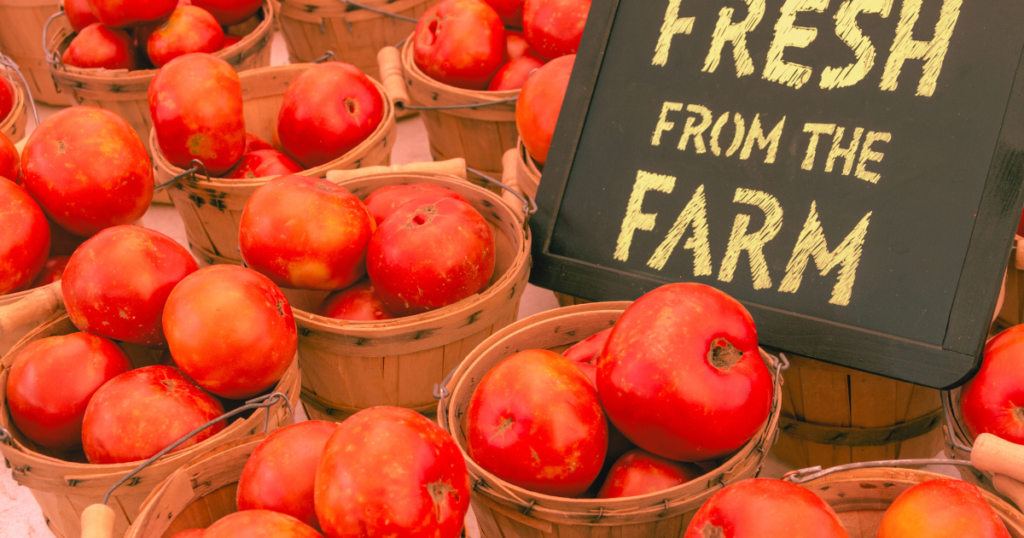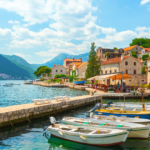Last Updated on December 27, 2023 by Rikki
In this article, you will learn about the quality of European food. Many have questioned “Is European food better quality? and “Is it better than food from other regions?” Find out about Europe’s Gastronomic Legacy. European cuisine is known for its emphasis on fresh, high-quality ingredients and traditional cooking methods.
Additionally, European countries often have stricter food regulations and standards compared to other regions, ensuring the safety and quality of their food. By exploring these factors, we can assess whether European food truly lives up to its reputation of being better in quality.
When it comes to European food, one cannot overlook the emphasis on fresh, locally sourced ingredients. Many European countries have a strong tradition of farming and agriculture, allowing them to produce a wide variety of high-quality ingredients.

From artisanal cheeses to flavorful wines, European culinary traditions prioritize the use of fresh, seasonal produce. This focus on quality ingredients not only enhances the taste and flavors but also contributes to the overall nutritional value of European cuisine.
Moreover, European countries often have strict food regulations and standards, ensuring that the food produced and sold meets specific safety and quality criteria.
Discover the allure of Europe’s gastronomic legacy, where every bite tells a story of traditional craftsmanship. Explore how the continent’s strict food regulations and emphasis on fresh ingredients set it apart on the global culinary stage. As you delve into the secrets of European cuisine, learn how certain foods might even assist in easing jet lag during your European adventures.
Is European Food Better Quality?

When it comes to food, Europe has long been regarded as a destination that offers superior quality and taste. The historical reputation of European food, the traditional production methods, and the strict regulations and standards all contribute to the excellence that is commonly associated with European cuisine.
In this article, we will explore the factors that influence European food quality, compare it with other food regions, and discuss the perception and recognition that European food has garnered worldwide.
Historical Reputation of European Food
European food has a rich history that spans centuries. The continent has been home to some of the world’s most renowned culinary traditions, such as French, Italian, Spanish, and Greek cuisines.
These cuisines have evolved over time, passing down traditional recipes and techniques from one generation to the next. This historical reputation of European food plays a significant role in the perception of its quality.
Traditional Production Methods
One of the reasons why European food is considered to be of superior quality lies in the traditional production methods that are still practiced today.
From artisanal cheese-making to bread baking and wine production, European countries have maintained a commitment to preserving these time-honored techniques. The focus on craftsmanship, attention to detail, and the use of high-quality ingredients contribute to the exceptional taste and quality of European food products.
Strict Regulations and Standards
European food is subject to strict regulations and standards that ensure both its safety and quality. The European Union has implemented various measures to protect consumers and maintain the integrity of European food products.
These regulations cover areas such as labeling, hygiene, animal welfare, and environmental sustainability. The EU’s Protected Designation of Origin (PDO) and Protected Geographical Indication (PGI) labels further guarantee the authenticity and origin of certain products.
Adherence to these stringent regulations and standards gives consumers confidence in the quality of European food.
Factors Influencing European Food Quality
Geographical Diversity and Climate
Europe’s geographical diversity and climate play a significant role in the quality of its food. The continent’s diverse landscapes, ranging from fertile plains to rocky mountains and coastal regions, offer a wide variety of ingredients and flavors.
The temperate climate in many European countries, characterized by distinct seasons, allows for the cultivation of a diverse range of fruits, vegetables, and grains. The availability of fresh, locally grown ingredients contributes significantly to the quality of European cuisine.
Cultural Importance of Food

Food holds immense cultural importance in Europe. It is not merely sustenance but a means of celebrating traditions, festivals, and social gatherings.
The emphasis on food culture and culinary heritage cultivates a sense of pride and craftsmanship among European chefs and producers. This cultural significance results in a high level of dedication and passion for creating exceptional food, further enhancing its quality.
Emphasis on Fresh and Local Ingredients
European cuisine places a strong emphasis on using fresh, seasonal, and locally sourced ingredients. This commitment to freshness ensures that European food is of the highest quality.
Many European countries have a strong agricultural sector, with small-scale farmers producing a wide range of fruits, vegetables, and animal products.
The shorter distances between farms and markets enable the delivery of fresh produce, thus minimizing the need for preservatives or artificial additives. This emphasis on freshness and local ingredients contributes to the superior quality of European food.

Comparison with Other Food Regions
North American Food Quality
When comparing the quality of European food with North American cuisine, several factors come into play. While North America has a diverse culinary scene, European food is often regarded as having a higher level of refinement and authenticity. This can be attributed to Europe’s long-standing food traditions and the cultural importance placed on culinary heritage. Additionally, the strict regulations and standards for European food products give consumers confidence in their quality and safety.
Asian Food Quality
Asian cuisine, with its bold flavors and diverse range of ingredients, is often held in high regard worldwide. While European food and Asian food offer different taste experiences, both regions are known for their commitment to quality. Asian food, especially in countries like Japan and South Korea, places great importance on fresh, seasonal ingredients and meticulous preparation techniques. European food and Asian food both have their own unique qualities that make them highly regarded in their respective regions.
South American Food Quality
South American cuisine is known for its vibrant flavors and the use of unique ingredients such as corn, potatoes, and tropical fruits. While South American food is highly regarded for its taste and variety, European food still holds a reputation for superior quality.
European cuisine benefits from a long history of refining recipes and techniques, as well as the stringent regulations and standards that ensure the quality of its food products. This is not to say that South American food is of lesser quality, but rather that European food has established a long-standing reputation for excellence.
Perception and Recognition
Global Recognition of European Food
European food enjoys global recognition for its exceptional quality. Whether it’s French cuisine with its emphasis on elegance and technique, Italian cuisine with its focus on simplicity and fresh ingredients, or Spanish cuisine with its vibrant flavors and diverse tapas, European food has made a lasting impression on the world’s culinary landscape.
The reputation of European food entices travelers and food enthusiasts to explore the diverse culinary traditions that each European country has to offer.
Prestigious Food Awards

European food has also gained recognition through prestigious food awards. The Michelin Guide, known for its rigorous assessment of restaurants around the world, originated in Europe and continues to shine a spotlight on European culinary excellence.
Many European restaurants and chefs have been awarded Michelin stars, further cementing the reputation of European food as being of the highest quality. These accolades not only recognize the individual achievements of chefs but also contribute to the overall perception of European food as being superior.
Increasing Popularity of European Cuisine

European cuisine has seen a surge in popularity around the world in recent years. This can be attributed to several factors, including the rise of culinary tourism, the influence of food media, and the growing appreciation for food with a sense of place.
Travelers are increasingly seeking out authentic gastronomic experiences when visiting European countries, whether it’s indulging in local specialties at rustic taverns in Greece or exploring the vibrant food markets of Spain.
The increased exposure of European food through television shows, food blogs, and social media platforms has also contributed to its popularity and the perception of its quality.
Distinct European Food Products
European food is known for its distinct products that have become iconic representations of the continent’s culinary heritage. From fine cheeses to artisan bread and wines, European countries excel in producing unique and exceptional food products.
Fine European Cheeses
Europe is home to a wide variety of fine cheeses, each with its own distinct flavor and character. From the creamy Brie of France to the sharp Cheddar of England and the pungent Gorgonzola of Italy, European cheeses are celebrated for their craftsmanship and taste.
The traditional production methods, combined with the use of high-quality milk from local farms, contribute to the excellence of European cheeses.
Artisan Breads and Pastries
European countries have a long history of bread-making and pastry-making, and their products are revered worldwide.

Whether it’s the crusty baguettes of France, the aromatic rye bread of Germany, or the mouthwatering pastries of Austria, European bakers are known for their skill and dedication to their craft.
The use of high-quality ingredients, such as locally milled flour and natural leavening agents, results in the exceptional quality and taste of European bread and pastries.
European Wines
Europe is renowned for its wine production, with countries like France, Italy, and Spain leading the way. These countries have a long tradition of winemaking, with vineyards that have been passed down through generations.
The combination of favorable climates, diverse grape varieties, and meticulous cultivation and winemaking practices contributes to the exceptional quality and complexity of European wines.
From full-bodied reds to crisp whites and sparkling wines, European vineyards produce a wide range of exceptional wines that are enjoyed worldwide.
Food Safety and Traceability
European food is synonymous with safety and traceability. The safety measures implemented in the production and handling of European food products ensure that consumers can enjoy them with peace of mind.
Stringent Safety Measures
European countries have implemented stringent safety measures to protect consumers and ensure the safety of their food products. These measures cover all stages of production, from farming to packaging and distribution.

European food producers are required to adhere to strict hygiene standards, implement rigorous quality control procedures, and conduct regular inspections to maintain the safety of their products.
This commitment to food safety sets European food apart and contributes to its reputation for excellence.
Transparent Supply Chains
European food products are known for their transparent supply chains, allowing consumers to trace the origin of their food.
European regulations require food producers to provide detailed information about the origin, processing, and handling of their products. This transparency ensures that consumers can make informed choices and have confidence in the quality and authenticity of European food.
Tracing the Origin of Ingredients
Europe has implemented systems to trace the origin of ingredients used in food production. For example, the EU’s PDO and PGI labels guarantee that certain products are made using traditional methods and originate from specific regions. These labels provide consumers with assurance regarding the quality, authenticity, and origin of European food products.
Sustainable Practices
Europe has been at the forefront of promoting sustainable practices in food production. From conserving traditional farming techniques to prioritizing organic and eco-friendly methods, European countries are committed to preserving both the environment and the quality of their food.
Conservation of Traditional Farming Techniques
Many European countries have taken steps to conserve traditional farming techniques, recognizing their importance in maintaining biodiversity and preserving the integrity of agricultural systems.
Traditional farming practices, such as crop rotation, agroforestry, and the use of natural fertilizers, contribute to the health and quality of European food. Europe’s commitment to conserving these traditional techniques ensures the long-term sustainability of its food production.
Focus on Organic and Eco-Friendly Methods

European countries have also embraced organic and eco-friendly methods in food production. Many European farmers have transitioned to organic farming practices, avoiding the use of synthetic pesticides and fertilizers.
The emphasis on sustainable agriculture and low-impact farming methods ensures that European food is free from harmful chemicals and produced in an environmentally responsible way.
Support for Local Farmers
Europe places great importance on supporting local farmers and promoting a fair and sustainable food system. European governments provide subsidies and financial incentives to encourage small-scale farming and protect agricultural diversity.

This support allows farmers to continue producing high-quality ingredients, maintain traditional production methods, and contribute to the overall quality of European food.
Culinary Tourism
Food tourism in Europe is a thriving industry, with travelers from around the world seeking out unique gastronomic experiences. From walks through bustling farmer’s markets to wine tours in picturesque vineyards, culinary tourism offers a chance to explore the rich culinary traditions of European countries.
Food Travel Across Europe
Traveling in Europe provides countless opportunities to indulge in the diverse culinary offerings of each country. Whether it’s savoring tapas in Spain, discovering Michelin-starred restaurants in France, or enjoying a street food feast in Istanbul, food travel in Europe is a sensory delight. Each region has its own specialties and flavors, making it a paradise for food enthusiasts.
Gastronomic Experiences and Food Tours
Food tours and gastronomic experiences have become increasingly popular across Europe. These tours offer a chance to immerse oneself in the local food culture, learn about traditional recipes and techniques, and taste a variety of authentic dishes.
Whether it’s exploring the culinary delights of Tuscany, participating in cheese-making workshops in the Swiss Alps, or joining a wine-tasting tour in Portugal’s Douro Valley, these experiences allow travelers to appreciate and understand the quality and artistry of European food.
Culinary Destinations in Europe
Europe is home to countless culinary destinations that attract travelers from all over the world. From food capitals like Paris, Rome, Verona, and Barcelona to lesser-known gems like Lyon, Bologna, and Porto, these cities offer a wealth of culinary delights.

European food markets, such as La Boqueria in Barcelona, Borough Market in London, and Mercado San Miguel in Madrid, are vibrant hubs of gastronomic activity, showcasing the diversity and quality of European food.
Preservation of Culinary Heritage
Europe is dedicated to preserving its culinary heritage, ensuring that traditional recipes and techniques are passed down through generations. This commitment to preserving culinary traditions contributes to the exceptional quality and uniqueness of European food, for example Maltese foods and traditional Lithuanian foods..
Preserving Traditional Recipes and Techniques
European countries place great importance on preserving traditional recipes and cooking techniques. Chefs and producers actively work to document and pass down these recipes, ensuring that they are not lost over time.

By preserving traditional recipes and techniques, European countries are able to maintain the authenticity and quality of their food.
Promoting Slow Food Movements
Europe has been at the forefront of the slow food movement, which advocates for the preservation of traditional food and the promotion of local, sustainable agriculture.
Slow food encourages consumers to prioritize quality over convenience, supporting small-scale farmers and artisanal producers. By promoting the slow food movement, Europe is able to preserve its culinary heritage and ensure the continued excellence of its food.
Revitalizing Endangered Food Traditions
Europe is also actively working to revitalize endangered food traditions. Many traditional recipes and techniques are at risk of being lost as younger generations move away from rural areas and traditional food practices.

European countries are implementing initiatives to encourage the revitalization of these endangered food traditions, ensuring that they continue to thrive and contribute to the overall quality of European cuisine.
Is European Food Better Quality? – Conclusion
In conclusion, European food has rightfully earned its reputation for superior quality. The historical reputation, traditional production methods, and strict regulations and standards all contribute to the excellence that is synonymous with European cuisine.
Factors such as geographical diversity, the cultural importance of food, emphasis on fresh and local ingredients, and the preservation of culinary heritage set European food apart. With its distinguished culinary legacy and continued commitment to excellence, European food offers an unparalleled taste experience that is cherished by food enthusiasts worldwide.
So, the next time you indulge in European cuisine, savor each bite, knowing that you are experiencing the best that food has to offer.


















